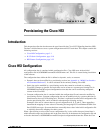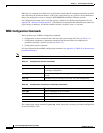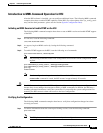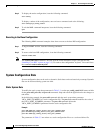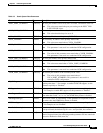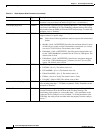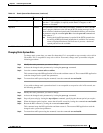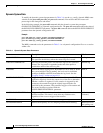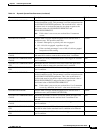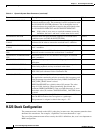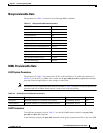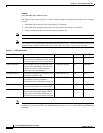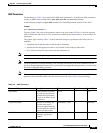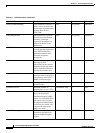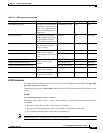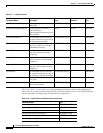
CHAPTER
3-1
Cisco H.323 Signaling Interface User Guide
OL-4806-01 Rev. A14
3
Provisioning the Cisco HSI
Introduction
This chapter describes the data that must be provisioned for the Cisco H.323 Signaling Interface (HSI).
The data is divided into two areas: system configuration and H.323 stack data. This chapter contains the
following sections:
• Cisco HSI Configuration, page 3-1
• H.323 Stack Configuration, page 3-10
• HSI Feature Configuration, page 3-22
Cisco HSI Configuration
All configuration data is contained within configuration files. Cisco HSI starts with an initial
configuration file in $GWHOME/currentGW/etc/GWmain.conf. This file is created during installation
of the software.
The configuration data within the file is defined as dynamic, static, or constant:
• Dynamic data can be modified by a provisioning session (see Appendix A, “MML User Interface
and Command Reference”). It can be activated on the currently running Cisco HSI.
• Static data can be modified by a provisioning session but cannot be activated on a running
Cisco HSI. Changes to dynamic and static data can be written to a separate provisioning file (in
$GWHOME/currentGW/var/prov/configname/session.dat) that can be used during subsequent
restarts of the Cisco HSI.
• Constant configuration data is contained within the configuration file and cannot be modified by
provisioning sessions. Constant configuration data can be modified only by system technicians or
administrators who use UNIX editing tools. This data is replicated from the initial configuration file
into the provisioning files, and is included in subsequent provisioning sessions.
Examples of the use of constant data are given in Appendixes D, E, F, and G. These appendixes
determine the mapping of cause values for incoming and outgoing H.323 and Enhanced ISDN User
Part (E-ISUP) messages. System technicians can modify these values in the initial configuration file
to explicitly choose the mappings for their system.
When a provisioning session creates a new configuration file, it also verifies that provisioned data is
within allowable ranges and indicates this in the start of the file. It checksums the configuration file and
writes the checksum as $GWHOME/currentGW/var/prov/configname/checksum.dat. When the Cisco



